
Live Sound Trends
We convene four of the world’s live sound heavyweights to reflect on the gamechangers of the last 15 years.
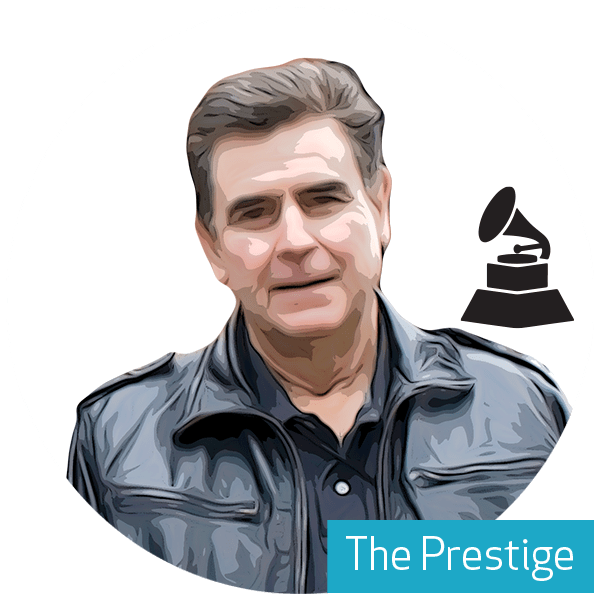
HOWARD PAGE
Howard is live sound royalty. He was a partner in Jands through the ’70s and ’80s before joining rental giant, Showco. He’s mixed sound for global superstars such as Van Halen, Sade, Bee Gees and more recently Sting. Howard is currently Senior Director of Engineering at Clair Bros where he’s also chief troubleshooter, rescuing tours that have gone off the sonic rails.

DAVE RAT
Dave is best known as the FOH engineer for the Red Hot Chili Peppers, Rage Against the Machine, The Offspring, and Blink 182. He’s boss of Rat Sound, an innovative rental and sales company based in California. Dave has a popular live sound blog, invented the MicroWedge, and is always testing the boundaries. Yes, Dave surfs.

SCOTT ‘SWA’ WILLSALLEN
Swa is a big event specialist. He’s been the audio director of just about every Olympic opening and closing ceremony since Athens in 2004. His consulting company, Auditoria, has plenty of expertise in designing all manner of technical production systems.
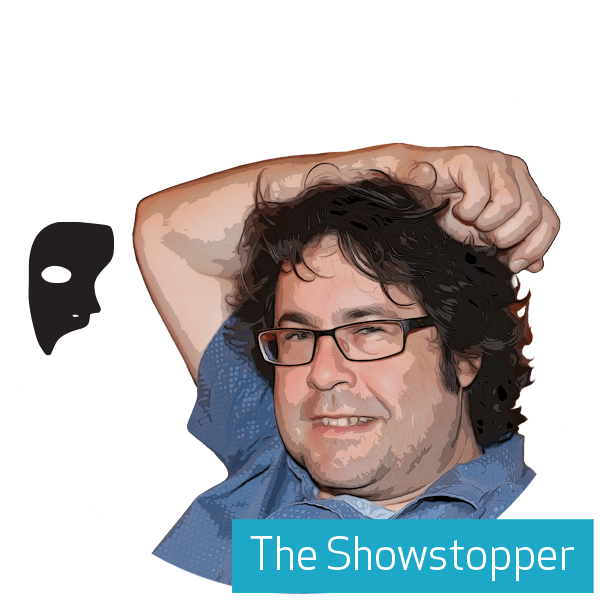
MICHAEL WATERS
Michael Waters brings 20-plus years of experience as a sound designer for musical theatre. He’s JPJ Audio’s not-so-secret weapon.
AT: Let’s tackle the thorny issue first: are we mixing shows any better than we used to?
Howard Page: Last European summer I did 20-30 of the biggest festivals in the world with Sting. Each date, I was confronted with a new sound system. We’d set up early and then spend the day waiting for our turn. It was nothing short of astounding to listen to how different 10 acts could sound. Some were all-but unlistenable and others were ‘knock your socks off’ amazing. The X factor? The guy behind the desk.
In the old days you’d unpack the PA from the Transit van, load it into the club, stack it on each side of the stage with the bass bins on the bottom, mids, then highs… maybe you’d put the bass bins a little forward of the highs to help time align the PA — if you wanted to get fancy. You’d have an analogue crossover, so there wasn’t anything you could do about timing offsets or intermod distortion. Yet those shows weren’t awful, in fact, often they were wonderful.
Now we’ve taken those technical issues out of the equation. We now have the ability to make the PA as perfect as it can be. The downside? The PA doesn’t mush up your mix and turn it into a rock ’n’ roll show like it used to. Now the focus is fairly and squarely on the guy behind the desk. More and more, the end result of the show is down to the engineer. Not the PA, or the lousy room.
With a perfectly optimised modern PA, your sound system is a lot like a Ferrari or Lamborghini — a high-performance thoroughbred. But unfortunately 90 percent of the operators of those systems are not Ferrari or Lamborghini drivers. I know this because of the number of bad-sounding international touring shows there are out there!
So do concerts sound better now? It’s better with the best guys, but the guys without their chops down? They would have had bad shows on old-school PAs, and they’re having worse shows on a modern-day PA system. These days the rigs are so clean and clear, every fault, every out of balance mix, every bad gain structure, every overuse of a plug-ins… it all shows up as a mess.
Michael Waters: I remember sitting in production meetings in the ‘90s, it was like going to the headmaster’s office. You knew you were going to get the cane: “You missed that line and that line, and I couldn’t hear this and that, and it sounds dodgy over there, and what about the people upstairs?” And on it went. Provided you’re diligent and competent, then those days are over.
V-DOSC GAMECHANGER
AT: There’s many game-changing tech advances in live sound since 1998, but can we safely say that the widespread adoption of L-Acoustics’ V-DOSC (and line source, now more generally) is the biggest of them all?
Dave Rat: V-DOSC changed everything. For the first time there were these long, slender PAs that could cover an entire room and it was jaw-dropping. It was a complete, revolutionary change in the way people thought about PAs. There was resistance at first from all the manufacturers and then everybody jumped on the bandwagon.
Michael Waters: With line source array’s co-planar symmetry and the waveguides, it just made the sound so coherent and seamless across the board, from the front of the venue to the back. Not only that, but in some theatres it cut down the number of delay and fill speakers we required. Prior to line array, we had a vast combination of Meyer MSLs and UPAs.
Scott Willsallen: With V-DOSC, rather than dealing with two dimensions of interference we only had one to deal with. That was the same dimension Christian Heil had tidied up for us by inventing the DOSC waveguide that takes care of the HF. The benefit of taking away those other interferences was they were so bloody complex — you could never predict or calculate the full story. By having something that behaves itself in the vertical plane you could adopt modelling software that was pretty easy to use on site. What used to be a result based on someone’s experience of what ‘worked last time’ became something far more predictable.
Michael Waters: Exactly. And without taking Christian Heil’s breakthrough too much for granted, in my view L-Acoustics’ predictive software was almost as game changing. What it now calls Sound Vision was a total revelation — it worked extremely well from the get-go — it really was very accurate.
Dave Rat: Just to expand on Swa’s point. Prior to L-Acoustics’ modelling software I would stand in a spot, put a chalk mark ‘X’, and say to my crew, “let’s put it here”. They flew it up, a guy would climb up into the rafters or stand on stage and look at the seats to make sure we didn’t block sight lines. It was just ‘seat of the pants’ stuff.
Back in those days, great system techs had many years of experience and wisdom. There was no way of fast-tracking someone through with good ears. It really was an old-school apprenticeship system where you’d learn the skill of looking at a room and instinctively knowing where the speakers should be and how they should be tuned.
It was a huge paradigm shift to use 2D (then 3D) models and develop some consistency between what you predicted and what actually occurred in the room — the confidence that brought was and is enormous.
Michael Waters: The same applied in theatre production. Prior to V-DOSC, you’d be getting your rigging pins; your shackles, putting it to the right height and then you’d have to fudge it, depending on which way you were twisting it to get it in the right position. Then you’d fly up maybe four, five or six times to get the correct angle.
Nice, seamless, phase conherent coverage without comb filtering was literally impossible.
AT: So the success of V-DOSC was as much about the ease of system design and predictability of results as it was about the sound?
Michael Waters: Getting a PA to sound right in the mid/late ’90s was arduous. We’d have Peter Ratcliffe [former JPS boss] walking around with his portable test/measurement device and listening to the same Boz Scaggs song for hours. Not only that, but he’d have Wyn Milsom with him as another pair of ears. There’d be somebody at the console, someone else at the drive rack to take instructions over the two-way radio, and yet another person at the amp racks to do any gain shading.
It was so much more labour intensive and the hours were mental! We were always locked in for the overnight sessions because you couldn’t tune an entire PA while the mechs were banging away and the lights were focusing, so you had the midnight-to-dawn shift, and it was horrible!
These days — and I don’t know if I should admit this — but there’s been a couple of shows where I’ve been able to tune within a couple of lunch breaks — time align it, and it’s come up perfectly! You can access your amplifiers and processors — everything is digitally accessible.
DIGITAL MIXING
AT: Back in the days of the Yamaha PM1D and other pioneering digital mixing consoles, FOH engineers could have a wild, hunted look in their eyes.
Howard Page: There was a lot of mistrust in the early days. And rightly so. They were incredibly unreliable and didn’t sound that good. Let’s not forget, the software was being written for the first time. Those were also the days when your PC would crash all the time. But digital is now in its fourth or fifth generation and things have really improved. And, in the case of a couple of today’s consoles, you can achieve virtually the same result as the best analogue.
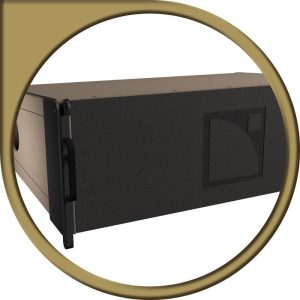
GAME CHANGER
L-Acoustics changed everything with V-DOSC
Little wonder then that some of the old guard — who didn’t even use a computer at home, let alone on the road — were deeply sceptical. Underlying that, they were intimidated, and could see the writing on the wall for analogue.
There aren’t too many analogue hold-out guys now. The people who manage these tours — the accountants and production people — are realising that if you have a digital console, you can transfer files between countries without shipping the gear along with it. So as long as you have the same mics and the same model console in another country, you can load up the files and away you go. And in most cases you take up a lot less room at FOH, which translates into more tickets sold.
Meanwhile, I’ve gone to shows where there’s a giant hum on the guitar amp, and no one’s ever bothered to hunt it down and fix that, and then behind the mixer is the analogue ‘purist’ who’s gotta have ‘this’ special preamp, and ‘that’ special valve compressor. When in actual fact, his show is being ruined by as something as banal as a ground loop in his guitar channel! Doesn’t make sense.
Dave Rat: I have no problem admitting I’m one of those analogue holdout guys. I still love my analogue mixer. I enjoy mixing in the way I enjoy driving a really fast car that handles well. In fact, I enjoy mixing even more than the car, but I enjoy both of those experiences.
Meanwhile, I enjoy mixing on a digital mixer like I enjoy playing a video game of driving.
Of course, I understand the advantages of digital and the case Howard makes for digital. But I think those advantages are overrated. Mostly, I’ll mix on an analogue board because of the connection I have with the artist and the audience. And let’s face it, that’s our job as audio engineers, to make that connection, and anything that stands between you and that connection is just a distraction. You can’t be watching your mixing console, you’ve got to only have eyes for the artist and the audience.
An analogue console allows me to focus on what’s important. It responds instantaneously and provides me access to everything that’s going on at all times.
Now, in my opinion, a digital console that buries things under layers doesn’t do that. First of all, you can’t see what’s going on. Second of all, when you want to access something you have to do that in multiple steps. So now you’re distanced further, and to compensate, you need to add illumination, computer displays and a significant focus on that. Visually, your focus is pulled from your primary purpose which is connecting the artist to the audience.
A guitar is a tactile device where the musician doesn’t need to look at the guitar while he or she is playing it. They look at the audience; they stay connected with the audience. Why do we hold ourselves to a lower standard than the musicians we work with? Why can’t we operate our ‘guitar’, our tool of the trade as efficiently and effectively without illumination, without any labelling, and be able to fluidly alter levels and pans, and more while maintaining a focus on the artist and the audience throughout? Wouldn’t that be the optimum?
Scott Willsallen: On a more grass roots level: digital has provided us with massive amounts of flexibility but it’s also allowed people to tie themselves in knots and lose the fundamentals of gain structure. Remember: it is possible to sound good without spending 30 minutes applying compression on every input. With the increased availability of the toys some of the focus has been taken away from the audience experience. A lot of the better shows I’ve ever heard were mixed on an analogue Midas Heritage 3000, with not a lot of outboard kit, half of which was replay for the pre-show music!
Howard Page: I love analogue, what sound engineer doesn’t? But there can be far more consistency with digital mixing consoles. Hypothetically, let’s say you’re preparing for a large tour with a lot of money behind it — as I am at the moment [Sting and Paul Simon] — by going into a production facility and you’re rehearsing for a couple of weeks. As an engineer, if you’re smart, you closet yourself away in a separate room, with high quality studio monitors so you have isolation from the band and you get the mix sounding as perfect as it possibly can. Only, let’s just say, you’re using an analogue console. Then you leave that production facility, and go on tour. The first few shows — provided your PA is tuned properly — may well sound pretty amazing. But unfortunately, the next show takes you into a bad room, and you make changes to the EQ. Every moment of time spent in that production facility is lost the moment you touch those 10 knobs on that analogue console. You never get back to that perfect mix under controlled conditions. The biggest advantage now, with digital mixing, is you can return to that benchmark point — regardless of what you’re doing within that show — the room, the band — you can go back to the reference mix. You know what’s coming out of that console is correct.
AUTOMATION & VIRTUAL SOUNDCHECK
AT: Michael, musical theatre has doubtlessly benefitted from mix automation?
Michael Waters: Prior to digital we did have moving faders on our Midas XL4s but those faders weren’t particularly good or reliable. Mostly you were performing a true orchestral mix every night. The cast mixing console would take subgroups of the orchestra, then we’d use those flying faders to plot scenes depending on who was strong and who was weak in the ensemble; to get the balance right.
There was certainly no scene automation. Unless of course you were willing to go well and truly above and beyond with some lateral thinking. On Boy from Oz [1998] I needed different tonal balance for each ensemble number. It could be a loud show at times, you could run out of headroom and you just wish you had a filter to grab, say, 1kHz, because that happened to be the frequency that was screaming along in that particular song. So I got a BSS Varicurve and strapped that across the ensemble group and had that MIDI-cued so I could change the EQ scene-to-scene. That was globally off a subgroup and was the only EQ automation I had at my fingertips at that stage.
Nowadays, in a busy show like Priscilla Queen of the Desert, I might have up to 20 or 30 different EQ shapes, depending on the song. Automation doesn’t mix the show for you, but having that starting point at each scene is invaluable.
AT: Just to sign off on ‘digital’: virtual soundchecks. When Avid first released its live board it became a nice ‘value add’, but recording gigs has become much more than that now hasn’t it?
Michael Waters: Yes, and not just in concert touring. We use virtual soundchecks extensively in training understudy operators, for example. That’s what we’re doing with The Lion King, we’re training our operators on a multi-track we recorded in one of the previews.
And everyone uses virtual soundchecks to fine tune their mix in their own time. Fifteen years ago you couldn’t learn your mix properly until you were well and truly into previews, or worse, two weeks after opening night, because you could only learn it in real time.
And just before we do sign off on digital: of course, in musical theatre world, it’s the producer who wins most from the move to digital. The space saving is amazing. We’re giving back tens of thousands-worth of seat real estate back. Does the sound company financially benefit from that? No. In fact, they’re probably paying us the same or less than they were in the ’90s! Hm, thinking about that, I’m not even exaggerating.
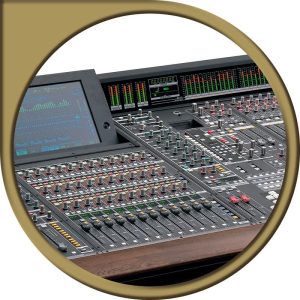
GAME CHANGER
PM1-D: all-digital finally hit the road
LIGHT ’N’ EASY
AT: Dave, as someone who’s run his own rental company for years, you must have noticed that your loads are considerably lighter?
Dave Rat: Amplifiers have changed out of sight. A Crown PSA-3s would weigh in at 80 pounds apiece – that’s 250 pounds-plus (115kg+) per rack, and give you 5000-6000W for the whole rack. Now you’ll have a 8000W amp that weighs less than 20 pounds (9kg), with up to 24,000W in a rack that that weighs less than a 100 pounds (45kg).
So we have five times the power in less than half the weight. That’s some massive trucking advantages. Back in the day, I was always surprised at how unimportant weight issues were to production managers. It was assumed that things were big and heavy, and there was an arrogance among production managers. I think they gauged how important they were by how many trucks they had on the tour. “I did a 20-truck tour!” “Yeah? I did a 30-truck tour!”
WHAT NEXT?
AT: Swa, as the world’s big event audio director of choice, you see the ‘no expense’ spared end of the business more than most. What’s next for live sound?
Scott Willsallen: The next big thing has to be about the audience experience and I think it’ll be making the experience more spatial. I’m about to work on a job in Dubai. It’s a highly spatial, theatrical design for a couple of thousand people. Technically, it’s not that difficult to do, but the opportunity is rare. We’ll have 180 loudspeakers going into a 1200-seat venue. Some sources are being installed solely for an eight-second effect. It’s about localising sound such that what you’re seeing and hearing one cohesive package.
Admittedly, for the moment, what I’m talking about is for the lucky few — it’s a hard trick to pull off for more than 1500 people — but I can see this as an area for further development.
AT: Any areas in which we’ve gone backwards?
Michael Waters: Where we’ve actually regressed is with bloody moving lights and the fan noise those things emit. I think it’s outrageous and seriously impacts on the sound of the show. It completely diminishes the dynamic range of a show.
I’m thinking of starting up some lobby group to make lighting manufacturers do something about it.
AT: A Facebook hate page might be a good place to start!








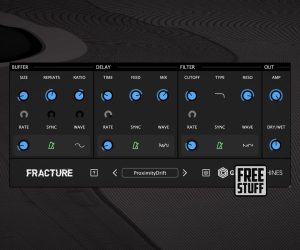



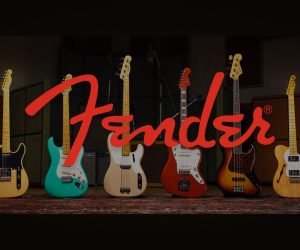
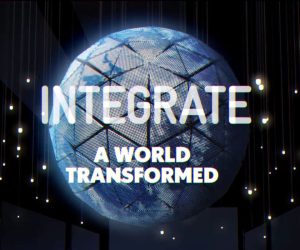



Excellent article that parallels my line of thinking for live sound. I’ve been witness to for more concert bad mixes as an audience member than good mixes. It’s even more difficult being a musician, recording engineer and record producer for over 40 years, sitting right above and behind the FOH mixer at the Starlight Bowl here in Burbank,California. We’ve had season sets in that venue for 13 years. I’ve written to the Burbank staff that put on these shows, offering my services, but they have not responded. By chance I happened to meet one of the performers in the excellent Queen tribute band, Queen Nation. I had seen his group perform at the Starlight the previous year and, like most bands, the mixing is done by the venue’s contracted sound company engineer. It turns out that Queen Nation were scheduled to perform later that year at the Starlight so I told this guy that I would like to mix their show. He requested my services to the venue staff and I was cleared to be the FOH mixer. Not was the concert a huge success, but people from the audience were coming up to me after the show saying, “this was the best mix I’ve ever heard at this place” and similar comments. So yes, the FOH mixer can make or break the entire show. For the popular tribute band market, they need to realize the importance of having their own mixers to take their show to the zenith.